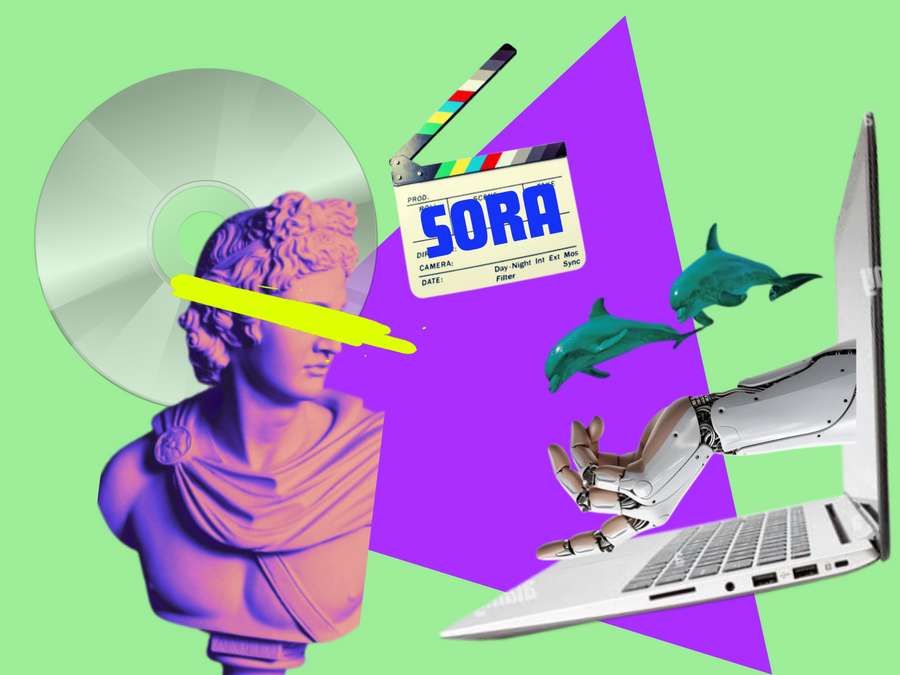Open AI's Sora Revolutionizes Video Production with Lifelike Content Generation
Główne pojęcia
Sora by Open AI transforms video production through lifelike content generation, democratizing the process and cutting costs significantly.
Streszczenie
Open AI's Sora introduces a groundbreaking approach to video production by creating lifelike one-minute videos from text inputs. The tool is set to revolutionize short-form video content creation, offering unprecedented speed and scale for creators. With a focus on democratizing video production, Sora opens up new dimensions of creativity and storytelling in advertising. However, ethical concerns regarding the potential misuse of AI-generated content loom large, prompting discussions about transparency and accountability in its usage.
Experts foresee Open AI’s Sora democratising and cutting video production costs
Statystyki
GroupM India’s TYNY report estimates ad revenue to reach INR 1,55,386 crore in 2024.
Indian AI market expected to reach USD 7.7 billion by 2025.
Lopez, Spain’s first AI influencer earns $11,000 per month.
Cytaty
"Sora's entry into the video production scene isn't just another tech moment – it's a complete game-changer set to shake things up." - Chetna Negandhi
"Sora's arrival is a game-changer - it completely democratizes video production." - Pratik Gupta
"The launch of Sora will reduce costs of video production tremendously." - Yash Chandiramani
Kluczowe wnioski z
by Shamita Islu... o www.socialsamosa.com 02-26-2024
https://www.socialsamosa.com/experts-speak/open-ai-sora-democratising-cutting-video-production-costs-3864374
Głębsze pytania
How can the advertising industry adapt to the democratization of video production brought by tools like Sora?
The advertising industry can adapt to the democratization of video production facilitated by tools like Sora by embracing the efficiency and cost-effectiveness that these AI-powered solutions offer. Firstly, agencies and brands can leverage Sora to streamline their content creation process, enabling them to produce high-quality videos at scale and speed. This will allow for more agile marketing campaigns that can quickly respond to market trends and consumer preferences.
Moreover, with reduced costs associated with video production, advertisers can allocate resources towards other aspects of their campaigns such as distribution or creative strategy. By utilizing Sora's capabilities, advertisers can experiment with different storytelling formats and engage audiences in innovative ways that were previously limited by budget constraints.
Additionally, training teams on how to effectively use AI tools like Sora will be crucial for maximizing its potential within advertising workflows. This includes understanding how to input text prompts that yield desired results, optimizing output quality through feedback loops, and integrating AI-generated content seamlessly into overall marketing strategies.
Overall, adapting to the democratization of video production through tools like Sora requires a shift in mindset towards embracing technology as an enabler rather than a disruptor in the creative process.
How might the rise of virtual influencers impact traditional marketing strategies?
The rise of virtual influencers is poised to have a significant impact on traditional marketing strategies across various industries. Virtual influencers present a unique opportunity for brands to engage with consumers in novel ways while also challenging established norms within influencer marketing.
One key way virtual influencers may influence traditional marketing strategies is through enhanced scalability and consistency in brand messaging. Unlike human influencers who are subject to availability constraints and personal branding considerations, virtual influencers operate 24/7 without fatigue or conflicting endorsements. This allows brands to maintain a consistent presence across digital platforms and reach global audiences more effectively.
Furthermore, virtual influencers offer greater control over content creation and brand representation compared to human counterparts. Brands can tailor messaging precisely according to their values and objectives without concerns about influencer behavior or public image controversies affecting campaign outcomes.
However, this shift towards virtual influencers also raises questions about authenticity and audience trust. Consumers may perceive interactions with virtual entities as less genuine or relatable compared to human influencers who embody real-life experiences. As such, marketers must carefully navigate this balance between technological innovation and maintaining authentic connections with their target demographics.
In conclusion, the rise of virtual influencers signals a paradigm shift in how brands approach influencer collaborations but necessitates careful consideration of audience perceptions and ethical implications within traditional marketing frameworks.
What measures should be taken address ethical concerns surrounding the use of AI-generated content?
To address ethical concerns surrounding the use of AI-generated content effectively several measures need implementation:
Transparency: Adhering strictly transparent practices regarding when AI has been used during content creation.
2.Regulation: Establishing clear regulations around data usage rights concerning generated media.
3.Education: Educating both creators & consumers about potential risks associated with deepfakes & misinformation spread via manipulated media.
4.Accountability Frameworks: Developing accountability frameworks involving all stakeholders including government bodies & relevant organizations.
5.Red Teaming: Continuously evaluating new technologies' potential misuse cases before widespread adoption
6.Legal Oversight: Involving legal teams early on during planning stages ensuring compliance & safeguarding against legal issues arising from misuse
By implementing these measures proactively businesses using AI-generated media could mitigate risks related unethical practices while fostering responsible utilization benefiting both creators & end-users alike
0
